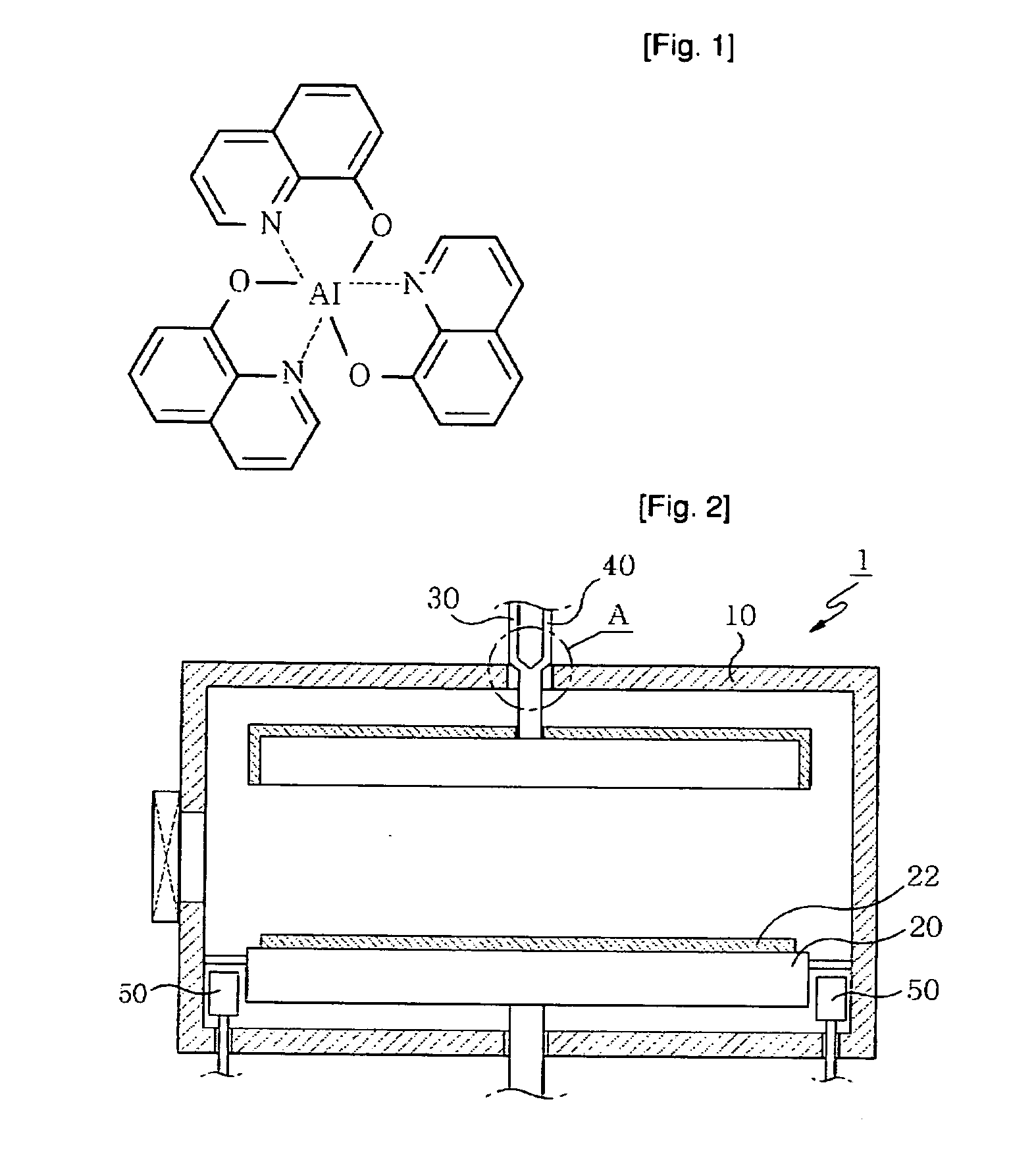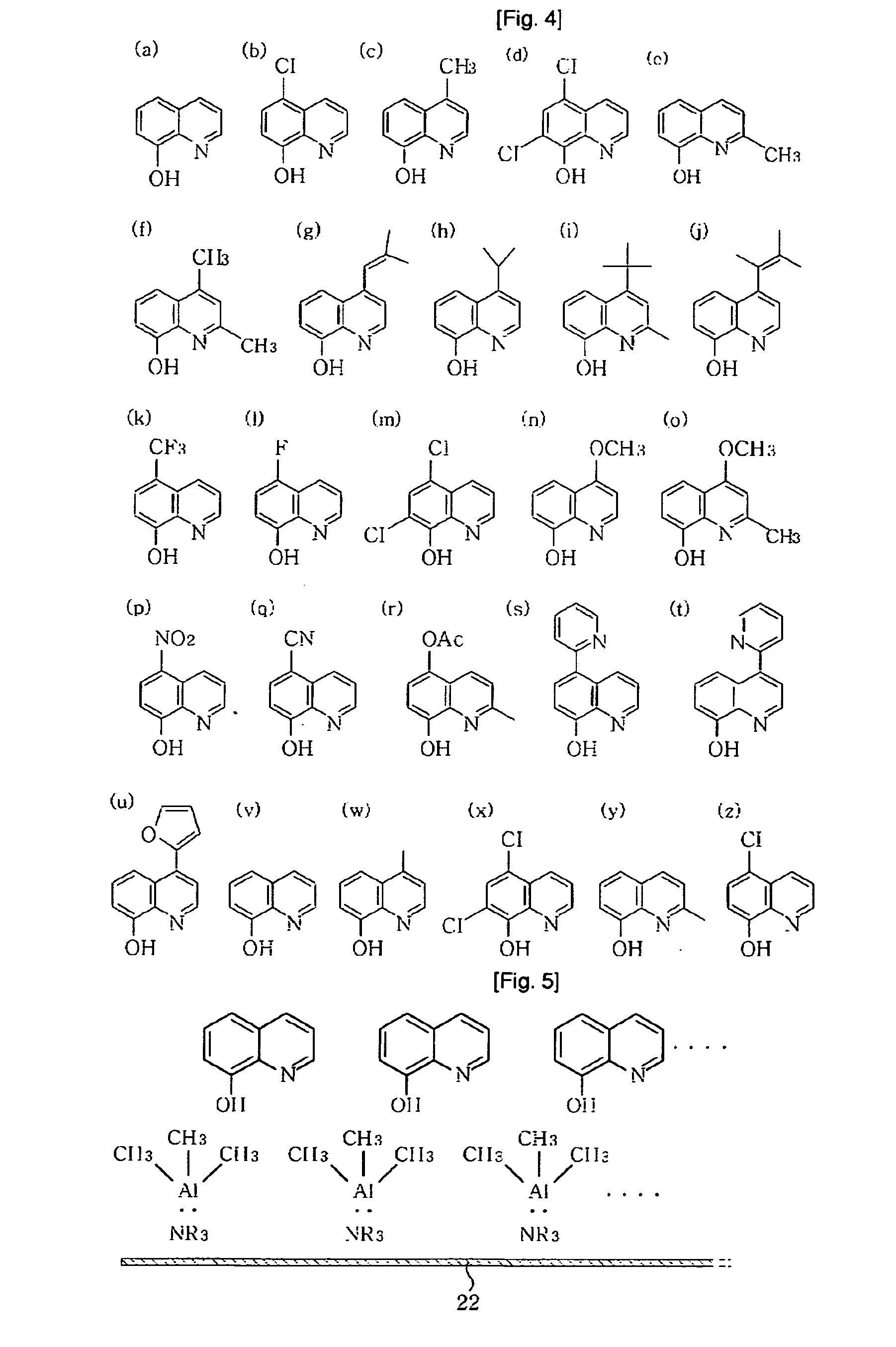Method for forming organic light-emitting layer
a technology of organic light and layer, applied in the direction of coating, solid-state device, chemical vapor deposition coating, etc., can solve the problems of non-uniform mq/sub>layer and cannot be produced on a commercial scal
- Summary
- Abstract
- Description
- Claims
- Application Information
AI Technical Summary
Benefits of technology
Problems solved by technology
Method used
Image
Examples
example 1
[0036] In this example, a method for forming a light-emitting layer by chemical vapor deposition is described.
[0037] A substrate 22 (ITO coated glass, film or wafer) is mounted on a heating susceptor 20 arranged inside a reaction chamber 10. Thereafter, the inner temperature of the reaction chamber 10 is maintained at a temperature suitable for reaction. The reaction temperature range is preferably room temperature to 500° C. As used herein, the term “room temperature” is defined as an ambient temperature between about 15° C. and about 25° C.
[0038] After the inner reaction temperature of the reaction chamber 10 is stabilized, a metal-containing material and an 8-hydroxyquinoline derivative are fed into the reaction chamber 10. The metal-containing material is selected from aluminum-, gallium- and zinc-containing materials. The aluminum-containing material is selected from the sixteen compounds shown in FIG. 3 and the compounds listed in Table 1 below. The aluminum-containing mater...
example 2
[0053] In this example, a method for forming an Alq3 layer by molecular layer deposition is described.
[0054] A substrate 22 is mounted on a susceptor 20 arranged inside a reaction chamber 10. Thereafter, the inner temperature of the reaction chamber 10 is maintained at a temperature suitable for reaction. The reaction temperature range is preferably room temperature to 500° C. As used herein, the term “room temperature” is defined as an ambient temperature between about 15° C. and about 25° C.
[0055] After the inner reaction temperature of the reaction chamber 10 is stabilized, an aluminum-containing material is fed into the reaction chamber 10. The aluminum-containing material is selected from the sixteen compounds having the structures shown in FIG. 3 and some compounds are listed in Table 1. The aluminum-containing material is vaporized before being fed into the reaction chamber 10. Since the aluminum-containing material has good vaporization characteristics, they can be easily ...
PUM
| Property | Measurement | Unit |
|---|---|---|
| reaction temperature | aaaaa | aaaaa |
| reaction temperature | aaaaa | aaaaa |
| reaction temperature | aaaaa | aaaaa |
Abstract
Description
Claims
Application Information
 Login to View More
Login to View More - R&D
- Intellectual Property
- Life Sciences
- Materials
- Tech Scout
- Unparalleled Data Quality
- Higher Quality Content
- 60% Fewer Hallucinations
Browse by: Latest US Patents, China's latest patents, Technical Efficacy Thesaurus, Application Domain, Technology Topic, Popular Technical Reports.
© 2025 PatSnap. All rights reserved.Legal|Privacy policy|Modern Slavery Act Transparency Statement|Sitemap|About US| Contact US: help@patsnap.com



